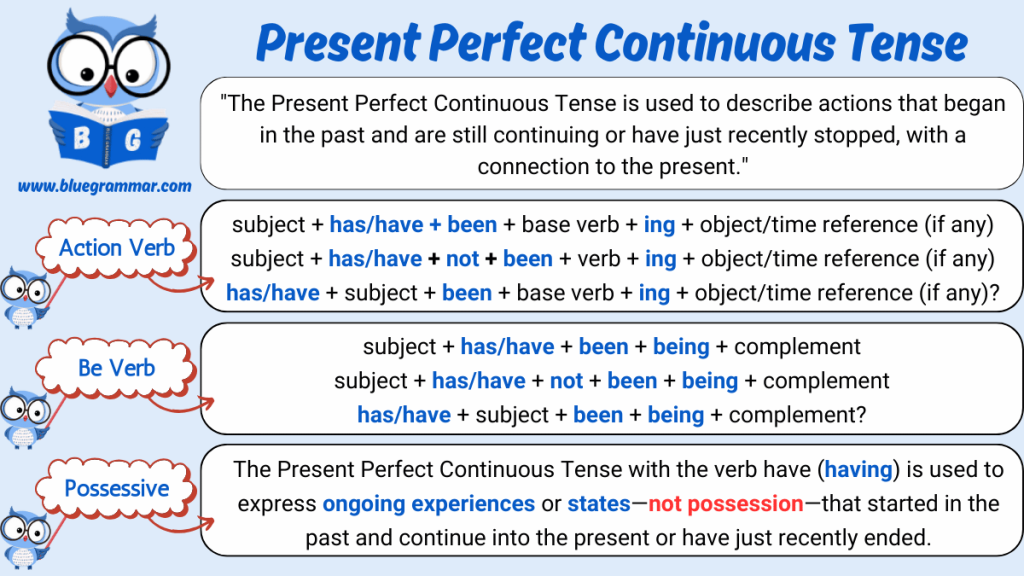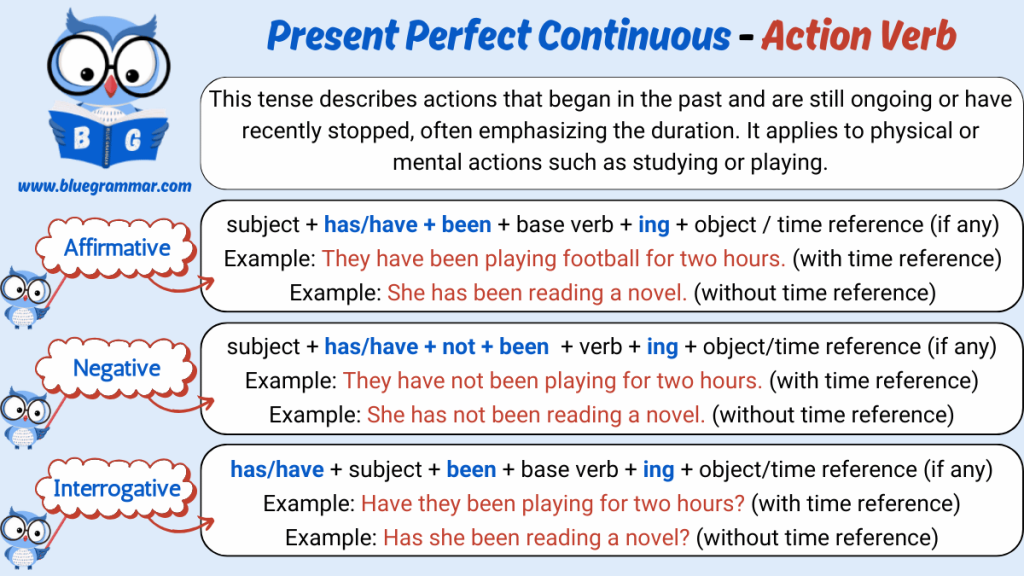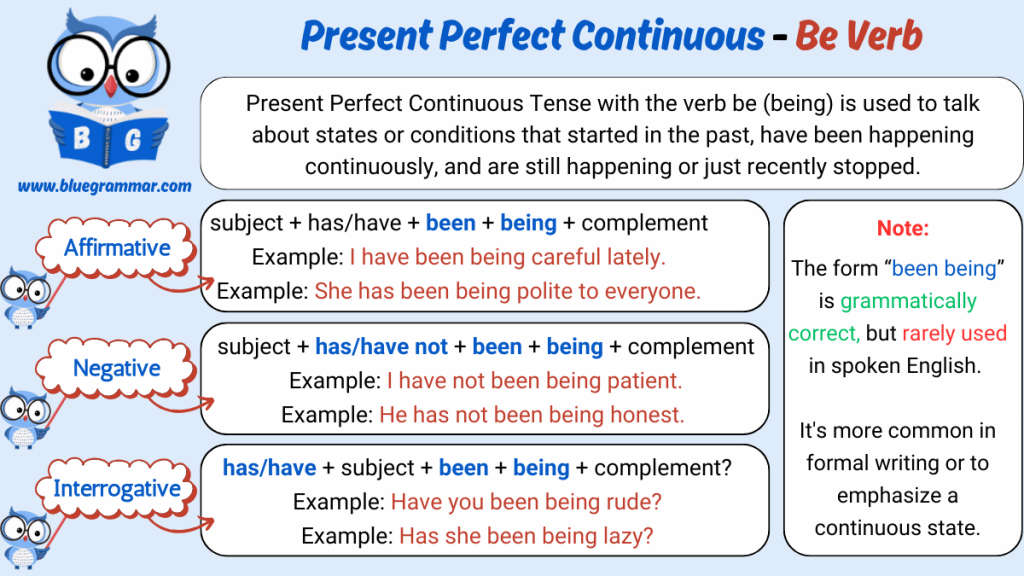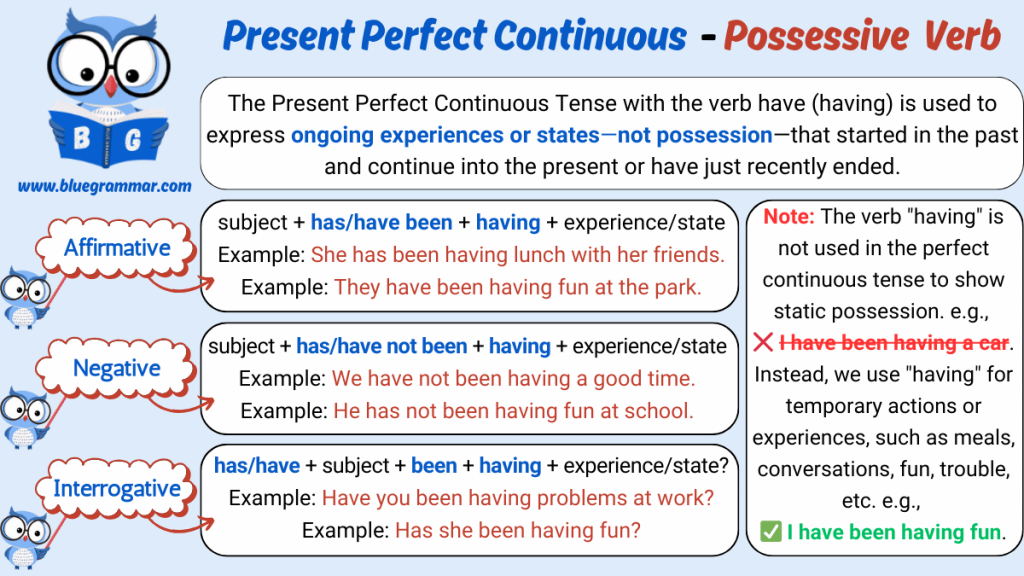
Present Perfect Continuous Tense : Action Verb
The Present Perfect Continuous Tense is used to describe actions that began in the past and are still continuing or have just recently stopped, with a clear connection to the present moment. This tense is often used to show the duration of an activity or to emphasize the ongoing nature of an action.

Making Positive Sentences
Structure:
Subject + has/have + been + base verb + ing + object/time reference (if any)
Use has with he, she, it (singular subjects)
Use have with I, you, we, they (plural subjects)
Examples with Object/Time Reference:
She has been reading a novel for two hours.
They have been playing football since morning.
I have been working on this project lately.
Examples without Object/Time Reference:
He has been sleeping.
We have been waiting.
I have been exercising.
Making Negative Sentences
Structure:
Subject + has/have + not + been + base verb + ing + object/time reference (if any)
Examples with Object/Time Reference:
She has not been studying for the exam.
They have not been visiting their grandmother lately.
We have not been using this room since last week.
Examples without Object/Time Reference:
I have not been sleeping.
He has not been practicing.
They have not been talking.
Making Interrogative Sentences
Structure:
Has/Have + subject + been + base verb + ing + object/time reference (if any)?
Examples with Object/Time Reference:
Have you been learning English for a long time?
Has she been cooking since morning?
Have they been traveling recently?
Examples without Object/Time Reference:
Have you been crying?
Has he been working?
Have we been shouting?
Present Perfect Continuous Tense : Be Verb
The Present Perfect Continuous Tense can also be used with “be” verbs, typically to describe ongoing states or conditions using being as a continuous form of the verb “to be.”

Making Positive Sentences
Structure:
Subject + has/have + been + being + complement
Examples:
He has been being honest.
They have been being very helpful.
I have been being patient with the situation.
Making Negative Sentences
Structure:
Subject + has/have + not + been + being + complement
Examples:
She has not been being careful.
We have not been being supportive.
He has not been being truthful.
Making Interrogative Sentences
Structure:
Has/Have + subject + been + being + complement?
Examples:
Have you been being polite?
Has he been being responsible?
Have they been being noisy?
Note: Use of “been being” is grammatically correct but rare and often sounds awkward. Native speakers usually avoid it unless necessary for clarity.
Present Perfect Continuous Tense : Possessive Verb
While the Present Perfect Tense can be used with “have” to show possession, the Present Perfect Continuous is not used to show permanent possession. Instead, when used with “have” (having), it expresses ongoing experiences or temporary states that started in the past and are continuing or have just ended.

Correct Usage (for experience/state):
I have been having a headache since morning.
She has been having trouble with her laptop.
They have been having a good time.
Incorrect Usage (for possession):
I have been having a car.
He has been having three phones.
These are incorrect because ownership is not expressed in continuous form.
Use Present Perfect (not continuous) for possession:
I have had a car for five years.
Conclusion:
The Present Perfect Continuous Tense highlights the duration or continuity of actions or experiences from the past up to the present. It is especially useful when discussing time-related events using phrases like “for two hours,” “since morning,” “lately,” “recently,” etc.
12 Tenses of English Grammar | Structures | Examples | Infographics